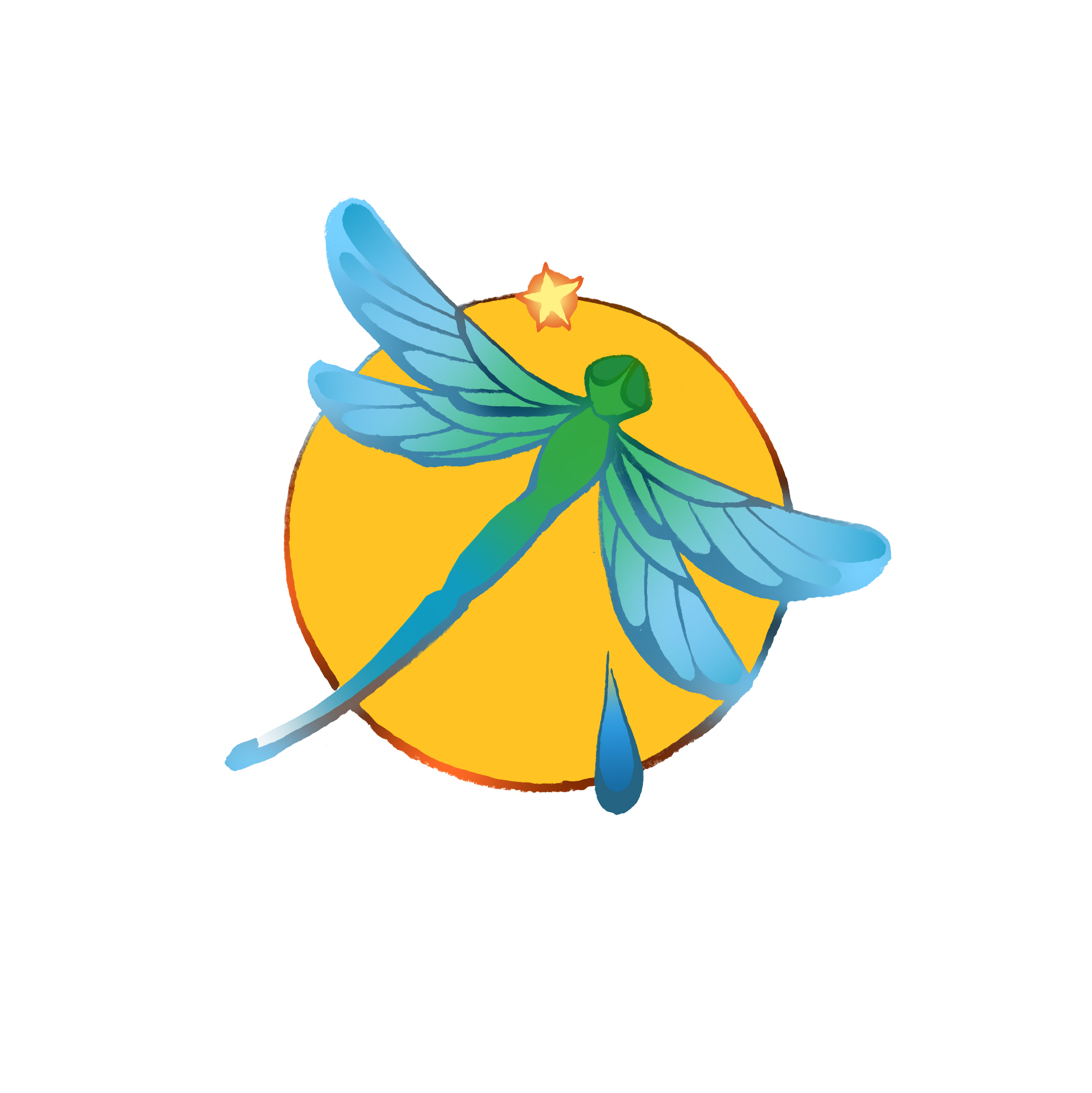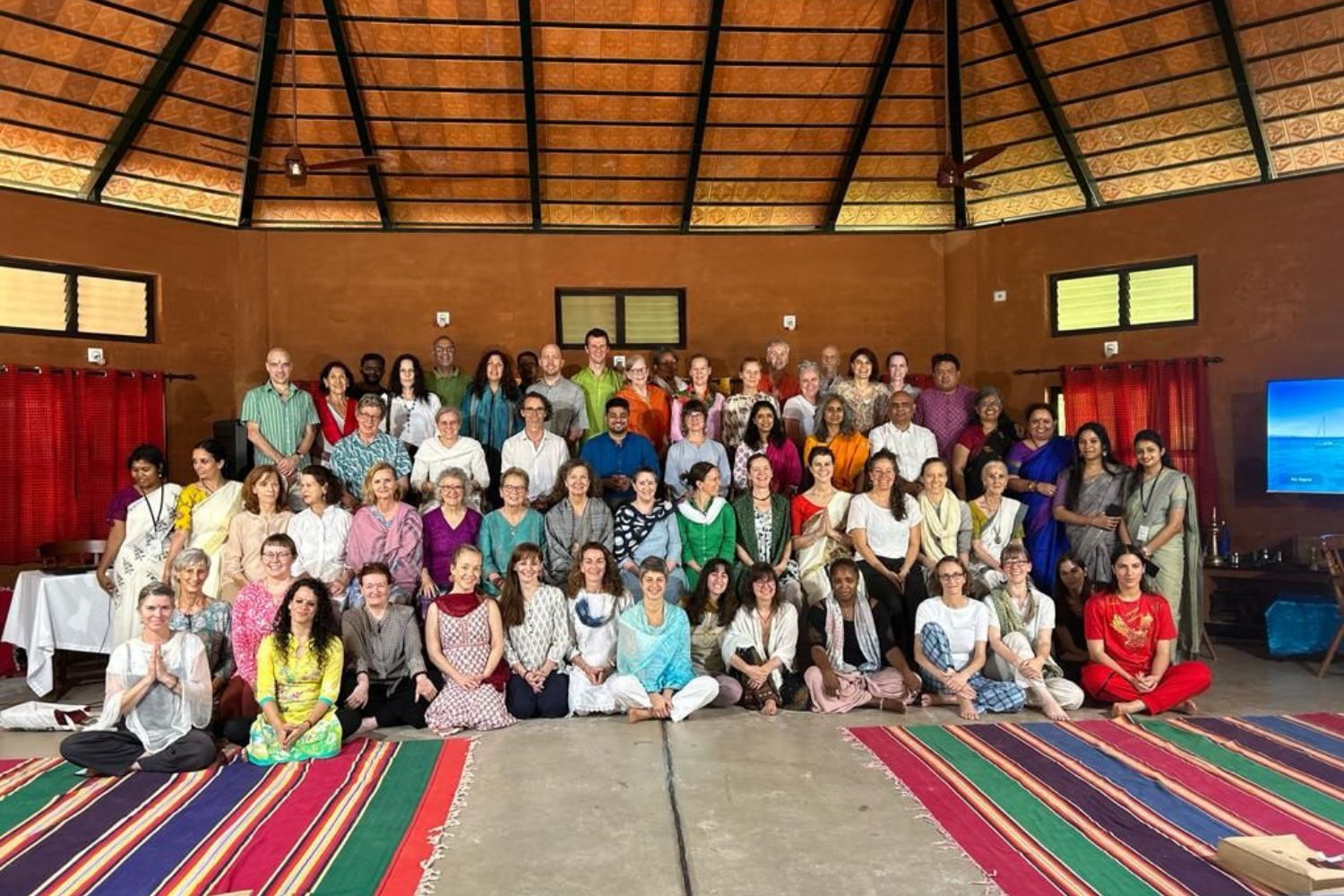Logo
The dragon or damselfly or, “vyādha” (hunter) “pataṃga” (winged insect) represents satsangam (confluence of truth or knowledge) and has been chosen as the Satsangam, because it applies the three laws of tissue (dhātu) nutrition Ayurveda teaches, to nourishing and transforming human minds, spirits and bodies. It applies the three laws in these ways:
- Irrigation (kedāri kulya nyāya): the drop of water falling from the dragonfly’s wing represents the waters of knowledge irrigating humans.
- Selectivity (khale kapota nyāya): dragonflies are famous for their hunting prowess. Similarly, each of us can consider from the vast field of possibilities, our innermost curiosity, and select what might satisfy it.
- Transformation (kṣiradadhi nyāya): Dragon or damselflies naturally transform to ever more refined organisms, through various stages of life, at home in and at ease with all the elements. They begin their lives in the water; the nymphs hatch and molt several times before emerging into their adult forms; a nymph crawls out of the water and perches somewhere on the earth; its exoskeleton splits open and a winged adult emerges, taking to the sky. Over the course of their lives they live in and under the water, outside the water, on land and in the air. We humans can also find ourselves at home in different life stages, transformed by the community, environment, knowledge and elements we encounter.
- Dragon and damselflies have been around for millions of years and are important components of aquatic ecosystems and indicators of good water quality. In the same way, the urge for knowledge and potential for transformation has been present in humans as long as we’ve existed and we strive to provide access to good quality knowledge.
- They are found on every continent except Antarctica and are found almost anywhere there is freshwater, in lakes, ponds, wetlands, streams, rivers, vernal pools and bogs. In the same way, sincere students of life are found all over the globe, drawn to wherever knowledge exists.

The star above the dragon or damselfly represents the quest for the subtle realms of knowledge, and also represents the starfish–a horizontal being. Starfish have a nervous system that is distributed throughout their whole being such that, if severed, they can each grow their own way. They represent Satsangam’s working ideal: we aim to be eusocial–that is operating as a horizontal rather than vertical organization; decentralized and egalitarian rather than hierarchical; resilient; working in cooperation rather than competition.

